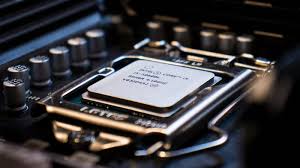Conducting benchmark tests to compare the performance of CPUs and GPUs can help you evaluate their suitability for specific tasks. Here are some steps to help you conduct benchmark tests:
- Define Benchmark Metrics: Determine the metrics you want to measure to evaluate performance. Common benchmark metrics include execution time, throughput (tasks completed per unit of time), energy efficiency, memory bandwidth utilization, or any other metric relevant to your specific task.
- Select Benchmarking Tools: Identify benchmarking tools that are widely used and recognized in the industry. For CPUs, tools like SPEC CPU, Geekbench, or Intel’s Performance Counter Monitor (PCM) can be used. For GPUs, tools like SPECviewperf, CUDA SDK samples, or GPGPU-Sim can provide performance insights.
- Prepare Benchmark Workloads: Identify representative workloads that closely resemble the tasks or applications you want to evaluate. These workloads should be representative of the computational patterns, data sizes, and algorithms relevant to your task. You can use synthetic benchmarks, real-world applications, or data sets specific to your domain.
- Set Up Test Environment: Ensure that the test environment is properly set up to eliminate any potential bottlenecks or interference. Close unnecessary background processes, ensure cooling is adequate, and configure power settings appropriately. Make sure the system is running under similar conditions for both CPU and GPU tests.
- Execute Benchmarks: Run the selected benchmarking tools with the chosen workloads on both the CPU and GPU systems. Follow the instructions provided by the benchmarking tool to obtain accurate and reliable results. Repeat each benchmark multiple times to account for variations and ensure consistency.
- Analyze and Compare Results: Analyze the benchmark results for each processor and compare their performance based on the chosen metrics. Look for significant differences in execution time, throughput, or other relevant factors. Consider factors such as peak performance, scaling with workload size, parallelism utilization, and memory access patterns.
- Consider System Configurations: Ensure that the CPU and GPU systems have comparable configurations in terms of memory capacity, clock speeds, cache sizes, and other relevant hardware specifications. Differences in system configurations can impact performance and should be taken into account when interpreting the benchmark results.
- Consider Limitations and Caveats: Be aware of any limitations or caveats associated with the benchmarking tools, workloads, or hardware configurations. Benchmark results represent specific scenarios and may not always reflect the performance in real-world applications. Consider the specific requirements and characteristics of your task when interpreting the results.
Benchmarking can be a complex process, and it’s recommended to have a good understanding of the benchmarking tools, hardware configurations, and performance metrics involved. Additionally, consult with experts or professionals in the field who have experience conducting benchmark tests to ensure accurate and meaningful results.
SHARE
